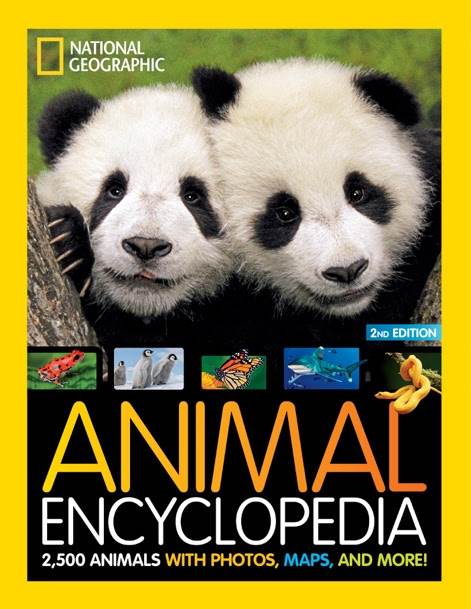Young animal lovers will be excited to join National Geographic Explorers on a journey of discovery in the new and improved National Geographic Animal Encyclopedia, 2nd edition.
This stunning family reference volume includes 2,500 animal species, 1,000 world-class animal photographs and exclusive updated field reports that take readers deep into the wild. Readers will discover thousands of animals and learn many new things along the way, including what certain animals eat, where they live, and what makes them so cool. The book is jam packed with authoritative information vetted by experts in the field that captures stats, facts and trivia.
Exceptional information and layout
While the exquisite photos alone would be enough of a reason to purchase this large, coffee-table sized book, the information and layout is also exceptional. Following the contents page, the book begins with a ‘How to Use’ guide that explains that the book is divided into eight parts: the introduction to the world of animals, followed by sections dedicated to the major animal groups: mammals, birds, reptiles, amphibians, fish and invertebrates. The final section is a listing of more than 1,000 additional animals set out in an easily navigable table.
User friendly and fun
The book does a great job of balancing the need to be relatively comprehensive with accessibility and user friendliness. It also focuses on providing readers with a diverse range of animals. Kids will meet a powerful African lion, a jewel-colored tree frog, or a tiny songbird; and then dive in with deep-sea fish and stealthy sharks. Each section begins with a photo introduction of the types of animals featured in that section, followed by a helpful “what is” overview. For example, the mammals section includes a double-page photo introduction of various mammals including the koala, bottlenose, dolphin, elephants, lions and even dogs. After gaining some familiarity with what mammals may look like, readers will arrive at a short page description of “What is a mammal?” This same approach applies for sections on birds, reptiles, amphibians, fish and invertebrates.
Wide range of useful topics
Families will also find it useful to dive into topics like animal life cycle and babies, senses and communication, homes and habitats, migrations, adaptations for survival, endangered animals, conservation, and newly discovered creatures. Kids will delight in learning about record-breaking animals, such as the biggest, longest, most intelligent, most toxic, strongest, tallest animal; and even the smelliest animal. A range of maps also accompany many of the listings which make clear where the animals can be found or otherwise originate. One new map to this edition showcases recently discovered animals.
Written and compiled by experts
While many experts feature in various sections of this book, author Lucy Spelman is responsible for much of the content.
Dr. Lucy Spelman is a lifelong animal lover, educator, scientist, and writer. As a board-certified zoo and wildlife veterinarian, she treats all species. As a researcher, she has studied otters, pandas and mountain gorillas. She is a National Geographic Explorer and a senior lecturer at the Rhode Island School of Design, where she teaches biology. In 2015, she founded Creature Conserve, a nonprofit organization bringing artists, writers, and scientists together to study and respond to the problems facing animals today.
A must-have for young animal lovers
Together with observation tips, did-you-know takeaways, an endangered status key, glossary and index, the National Geographic Animal Encyclopedia is an excellent addition to any animal lover’s collection and an optimal resource for that upcoming school animal project. It has more animals and more photos than any other animal book I have encountered. It is also a fun, informative and engaging read. It doesn’t get better than traveling the world, discovering new animals, and learning new things, and this book does all three at a superior level.
National Geographic Animal Encyclopedia, 2nd edition, was released on September 28 and is available now.


